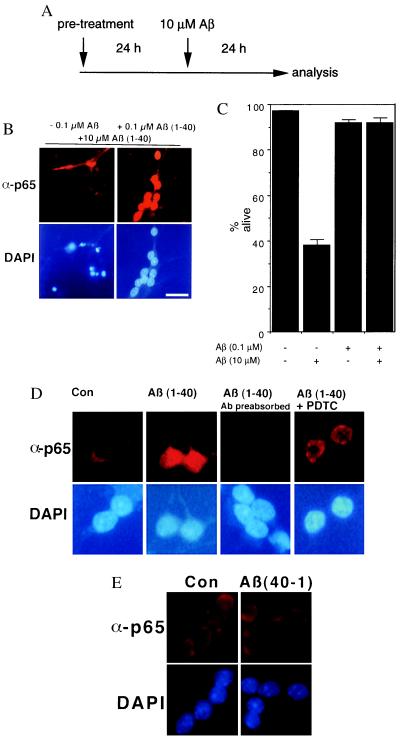Figure 1.
Neuroprotection against Aβ is induced with low amounts of Aβ and depends on NF-κB activation. (A) Experimental setup for the treatment of primary cerebellar granule cells. Pretreatment was done with 0.1 μM of Aβ-(1–40), or mock 10 μM Aβ-(1–40) was used to induce cell death. (B) Granule cells were stained with anti-p65 NF-κB (Upper) and DAPI counterstaining (Lower). Neuronal death (see pyknotic nuclei) is induced after Aβ treatment without pretreatment (Left); long-lasting NF-κB activation is seen in neurons pretreated with Aβ (Right). Scale bar, 25 μm. (C) Quantification of neuronal cell death after Aβ treatment. Data are shown as mean ± SEM of five independent determinations. Treatment was as shown in A. Treatment with 10 μM of Aβ-(1–40) induced a > 60% reduction of viable cells (P < 0.001 to all other conditions), whereas pretreatment with 0.1 μM of Aβ-(1–40) reverses the neurotoxic effect. (D) Preincubation of the peptide epitope used for generation of the antibody totally abolished the p65 staining, showing the high specificity of the used anti-p65 antibody (compare second and third panels). A preincubation of 100 μM PDTC for 15 min blocks the activation of NF-κB by 0.1 μM Aβ (Right). (E) An Aβ with inversed sequence (Aβ-40–1) is not activating NF-κB in cerebellar granule cells.

